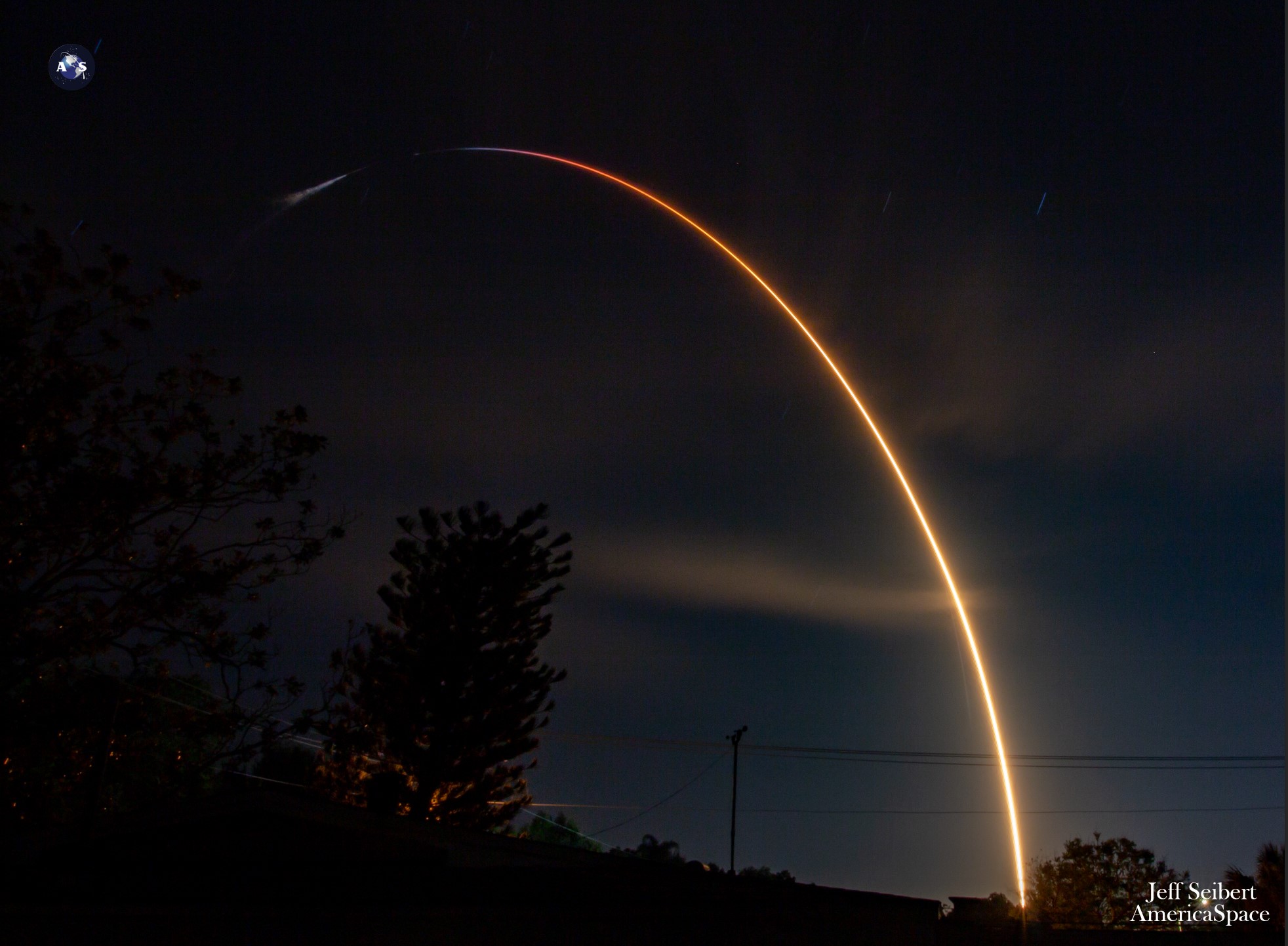
A three-times-flown Cargo Dragon is zeroing-in on a month-long berth at the International Space Station (ISS), following its smooth Tuesday evening launch, with an expectation that it will reach the sprawling orbital complex early Thursday morning. The CRS-27 mission—flying under the second-round Commercial Resupply Services (CRS2) contract between NASA and SpaceX—took flight from historic Pad 39A at Florida’s Kennedy Space Center (KSC) at 8:30 p.m. EDT, laden with almost 6,300 pounds (2,850 kilograms) of payloads, equipment and supplies for the incumbent Expedition 68 crew.
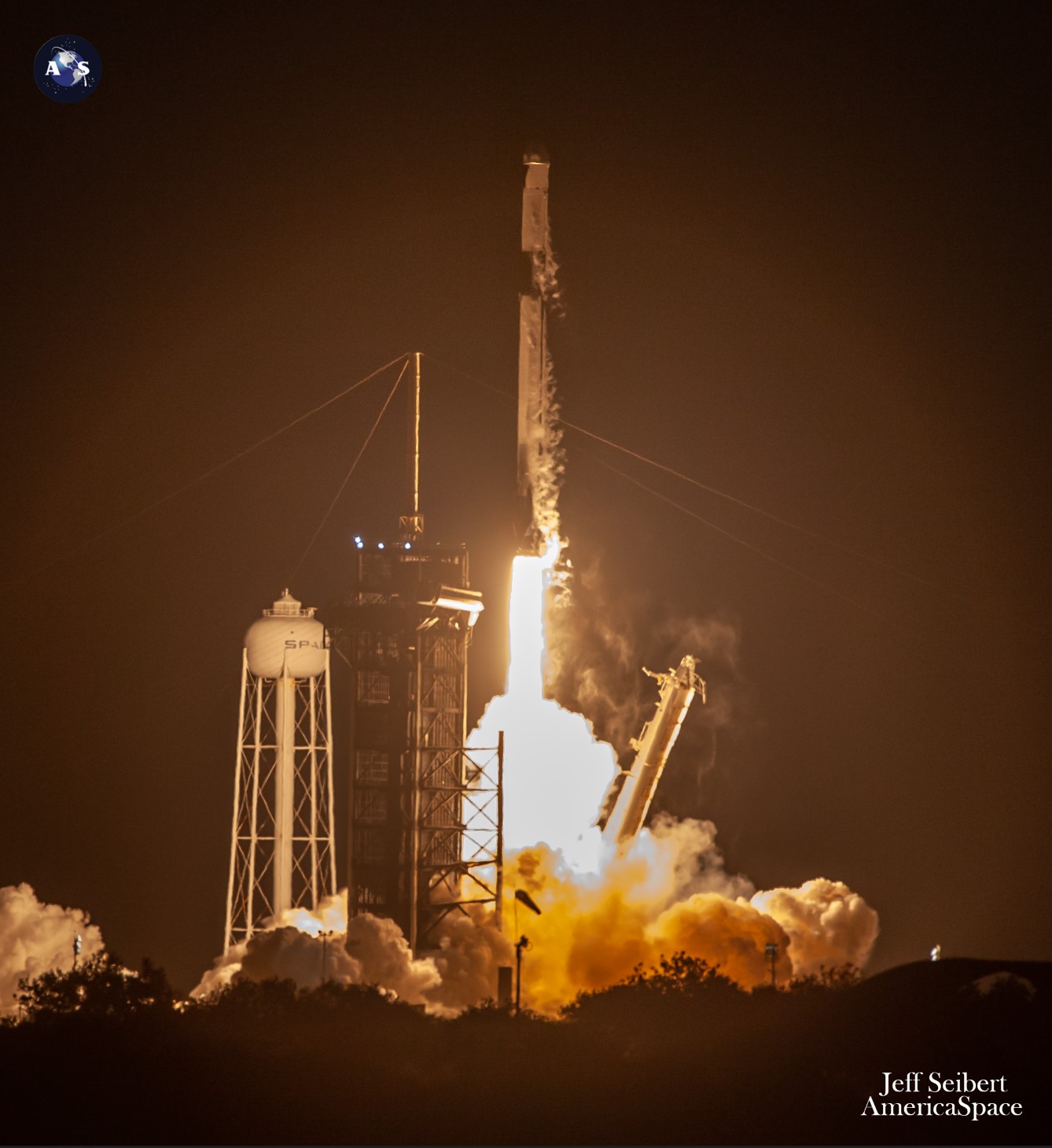
Flying today’s mission was the Cargo Dragon codenumbered “C209”, which flew previously in support of the CRS-22 mission in the summer of 2021 and more recently CRS-24, which concluded a month-long stay at the ISS in January of last year. Those two flights saw this ship accrue almost 71 days of on-orbit time, during which she transported more than 13,900 pounds (6,300 kilograms) of cargo uphill and returned 10,200 pounds (4,600 kilograms) of experiment samples and unneeded gear back home.
Aboard CRS-27 are the final pair of experiments for the National Institutes of Health (NIH) and ISS National Laboratory’s Tissue Chips in Space initiative. One experiment, Cardinal Heart 2.0, utilizes three-dimensional heart “organoids” to examine whether clinically approved drugs can reduce microgravity-induced changes in heart cell functionality and gene expression. Research thus far in this area has seen “significant” observed changes which indicate that long-term spaceflight can damage the heart, with potential effects including cardiac muscle atrophy.
The second investigation, Engineered Heart Tissues-2, uses 3D-cultured cardiac muscle tissue cells to assess human heart function in microgravity. Earlier studies conducted during the Expedition 61/62 increment in 2019-2020 observed changes at cellular and tissue levels which could indicate the early onset of cardiac disease, with this latest research study seeking to test new therapies to circumvent these negative effects.
Also aboard the Cargo Dragon is the High School Students United with NASA to Create Hardware (HUNCH) Ball Clamp Monopod, which will evaluate a platform for securely holding cameras to track targets on the ground or inside ISS modules. Manufactured by students, the experiment responds to crewmember concern about the difficulty of positioning cameras on the station and ensuring their stability.
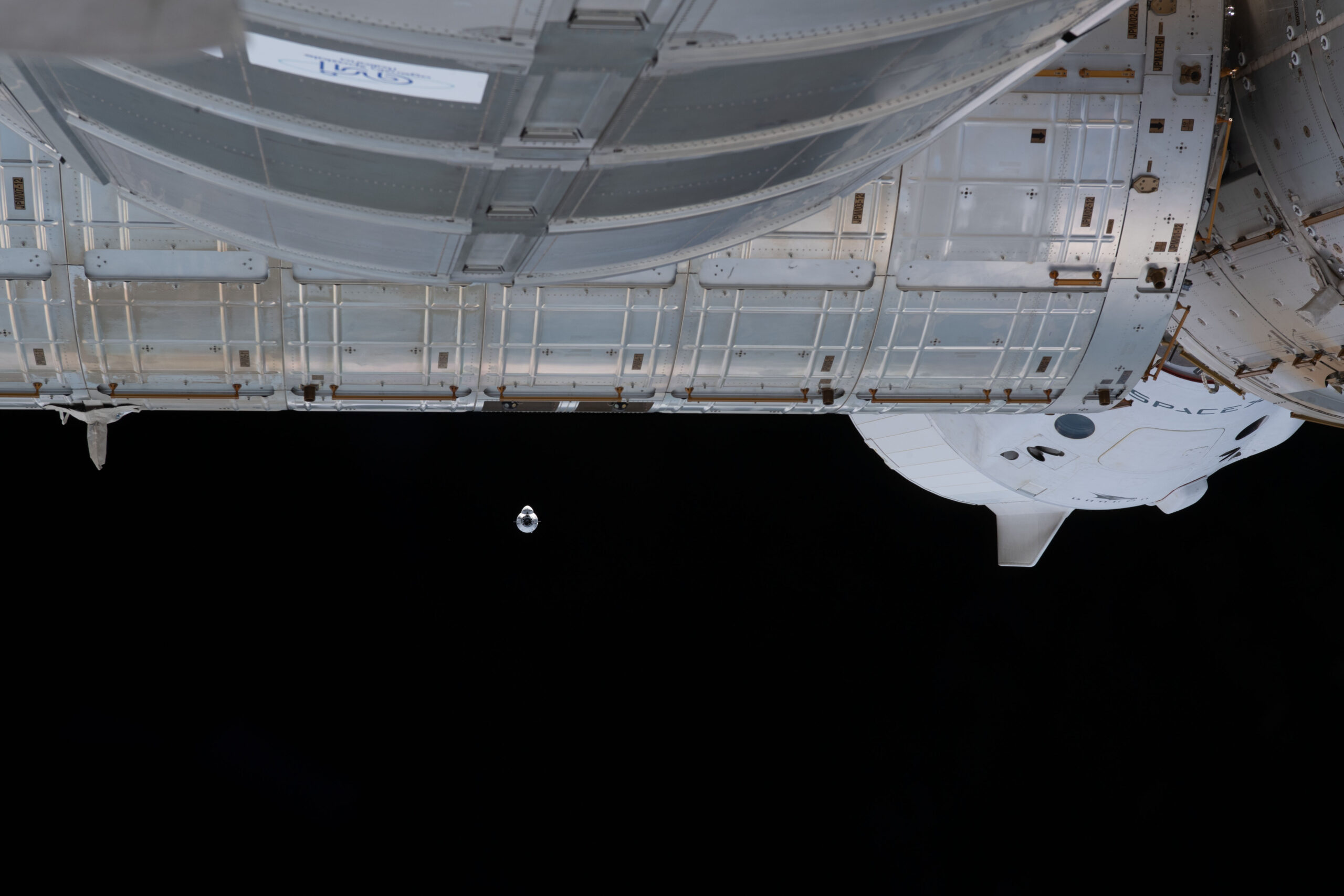
It will demonstrate an easy-to-install ball clamp mechanism, which can be affixed to an internal handrail to facilitate a pivoting platform for photography or videography. Potential locations for its usage include the station’s multi-windowed cupola, the Japanese Kibo lab or adjacent to the Microgravity Science Glovebox (MSG)/Life Sciences Glovebox (LSG), with an expectation that crew time for installation, evaluation and removal should require no more than 45 minutes at each location.
Another experiment, provided by the Japan Aerospace Exploration Agency (JAXA), is Tanpopo-5, which looks to understand the origin, movement and survival of various species of life in space, using radioresistant bacteria, moss spores, amino acids and peptides. As well as offering important insights into the origins of life on Earth, the Tanpopo-5 research may have applications in the development and implementation of planetary protection strategies to avoid microbial contamination for future habitation on Mars.
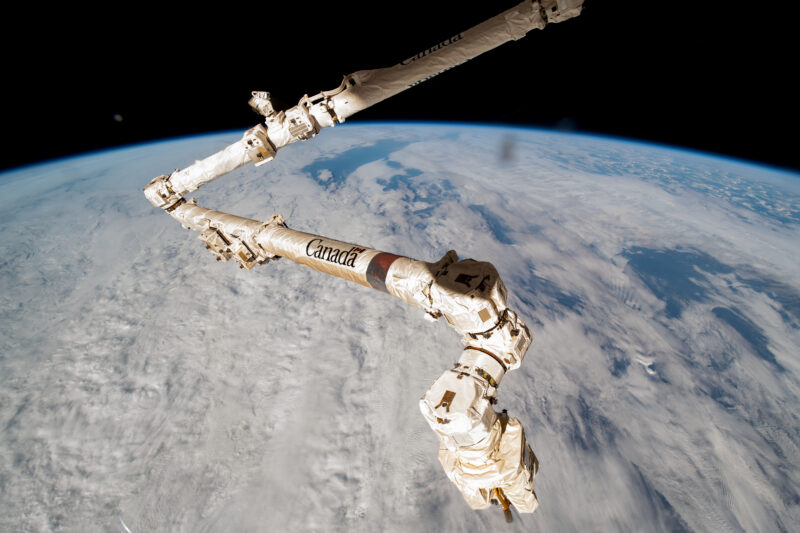
Space Systems Command (SSC) will also fly its Space Test Program-Houston-9 (STP-H9) payload of eight technology experiments—sponsored by NASA, the Naval Research Laboratory, the Air Force Research Laboratory, the Air Force Academy and Lawrence Livermore National Laboratory—for robotic emplacement on the Exposed Facility (EF) of the Kibo lab. And a pair of CubeSats, developed by students at the University of Arkansas and another from Arizona State University will fly as part of NASA’s Educational Launch of Nanosatellites (ELaNa)-50 mission.
ARKSAT-1 will conduct atmospheric measurements in conjunction with a ground-based spectrometer as part of efforts to alleviate the threat of space debris. It includes a lightweight Solid State Inflatable Balloon (SSIB) to greatly increase ARKSAT-1’s aerodynamic drag, thus aiding its safe re-entry and disintegration at the end of its operational mission.
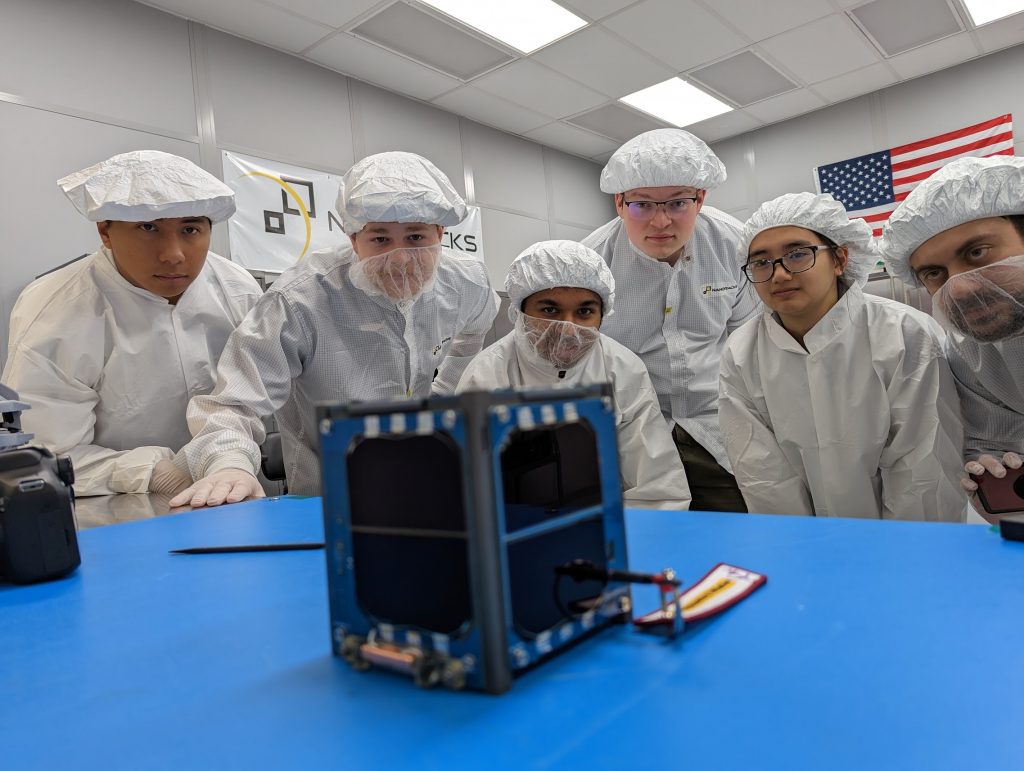
And LightCube features a flashbulb which can be remotely controlled by amateur radio operators, who will be able to activate the satellite to produce a brief flash, visible from the ground. The flash will be of equivalent brightness as the apparent magnitude of the ISS itself.
LightCube is designed to offer worldwide users the chance to “telecommand a spacecraft and observe a tangible and immediate response in the night sky,” said Principal Investigator Jaime Sanchez de le Vega. Current plans envisage the deployment of CRS-27’s CubeSat haul later in March.
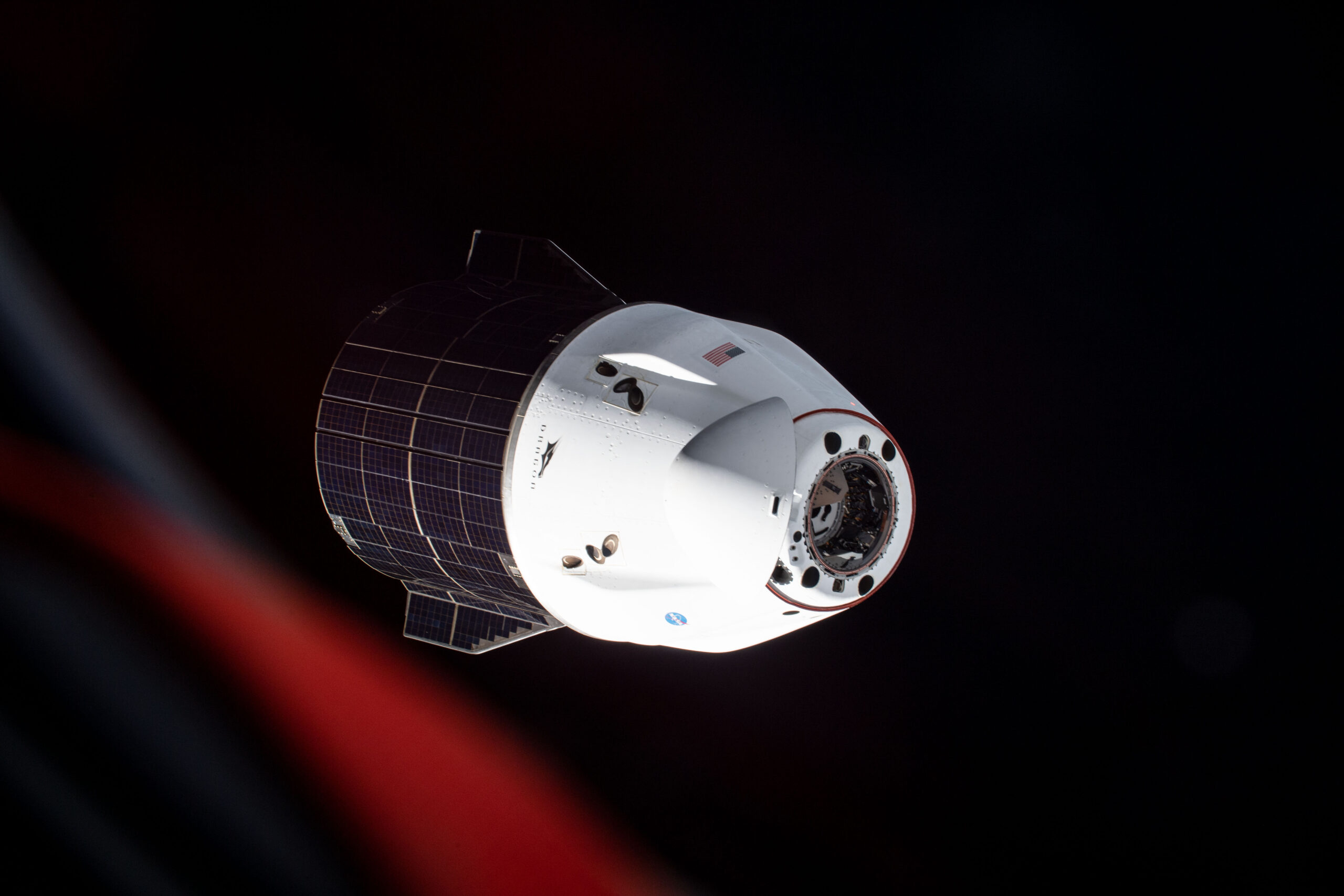
Elsewhere, the CapiSorb Visible System (CVS) will perform a demonstration of using capillary forces to control carbon dioxide-absorbing liquids, with potential future benefits in the design of lightweight life-support architectures for the Moon and Mars. And Biofilms, developed by the European Space Agency (ESA), will investigate the formation of aggregates of three different bacterial species on differing metallic surfaces, both with and without antimicrobial properties, as part of efforts to support the development of materials to minimize microbial contaminants inside future spacecraft.
The CRS-27 mission continues a long-running cargo relationship between SpaceX and NASA, which began with the original Commercial Resupply Services (CRS) contract, signed way back in December 2008. That saw 20 SpaceX Cargo Dragons truck a total of 95,000 pounds (43,000 kilograms) of cargo to the ISS and 75,000 pounds (34,000 kilograms) back home between May 2012 and March 2020.
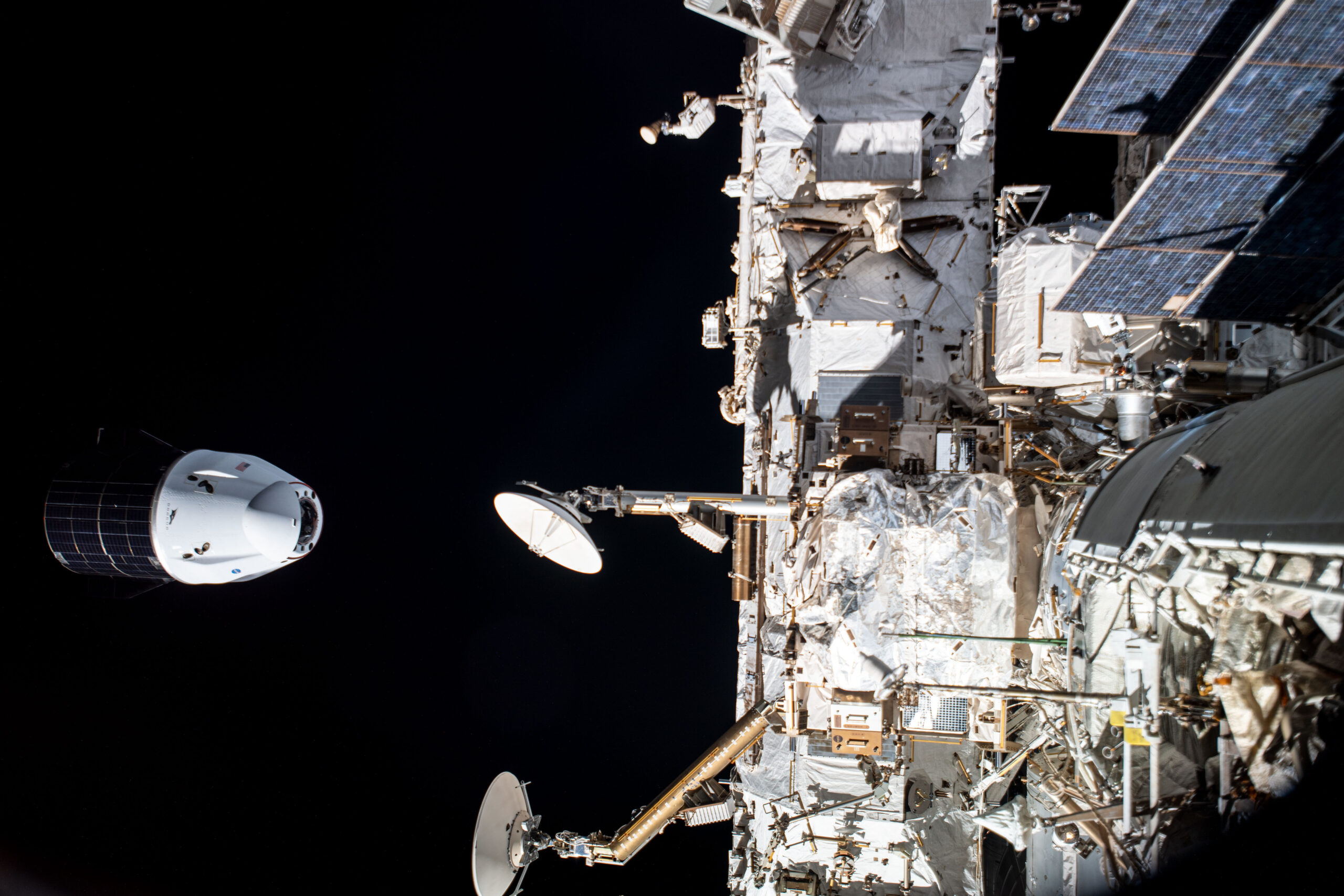
A second-round CRS2 contract was agreed in January 2016, initially allocating at least six cargo flights for SpaceX. The Hawthorne, Calif.-based organization officially kicked off its CRS2 commitment in December 2020 with the CRS-21 flight, which became the first U.S. uncrewed visiting vehicle to autonomously dock—rather than be robotically “berthed”—at the space station.
Four more missions followed in June, August and December of 2021, with CRS-25 completing its month-long stay at the ISS last summer. All told, SpaceX’s six inaugural CRS2 missions delivered around 37,000 pounds (17,000 kilograms) of equipment, payloads and supplies to successive ISS crews and returned more than 20,000 pounds (9,000 kilograms) of samples, experiment results and equipment back to Earth.
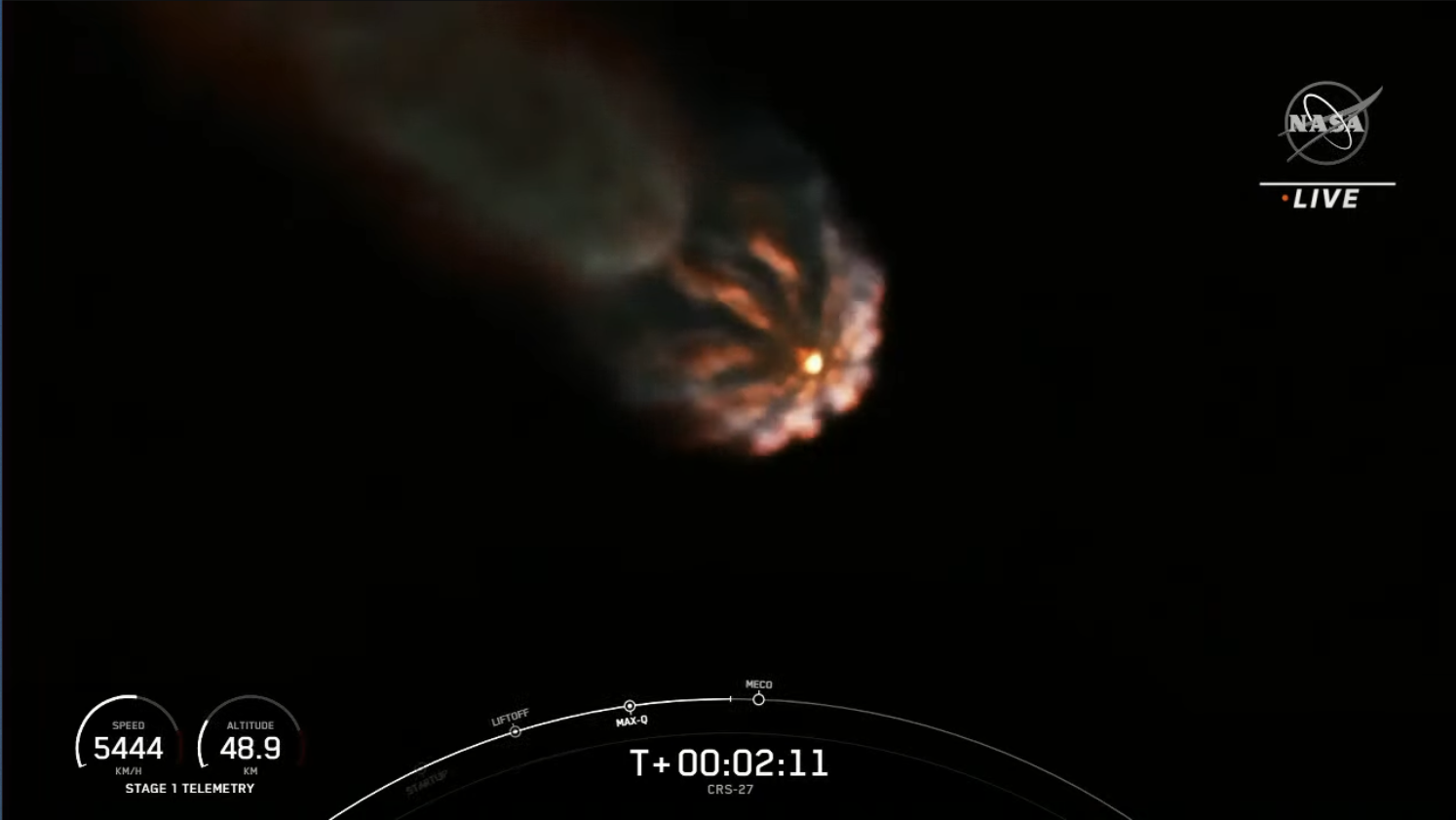
But SpaceX’s CRS2 commitment has already been extended well beyond those six basic flights. In October 2020, NASA contracted three additional Cargo Dragon missions in furtherance of the program from CRS-27 through CRS-29, all three of which are scheduled to fly this year, with CRS-28 targeted for June and CRS-29 for December. Early last year, another six Cargo Dragons were added, up to CRS-35 in the 2026 timeframe.
In readiness for tonight’s launch, the Autonomous Spaceport Drone Ship (ASDS), “A Shortfall of Gravitas”, put to sea out of Port Canaveral on Sunday, bound for a recovery position offshore in the Atlantic Ocean. Teams concluded the CRS-27 Launch Readiness Review (LRR) milestone on Monday and wrapped up the Late Cargo Load of time-critical payloads inside the Cargo Dragon.
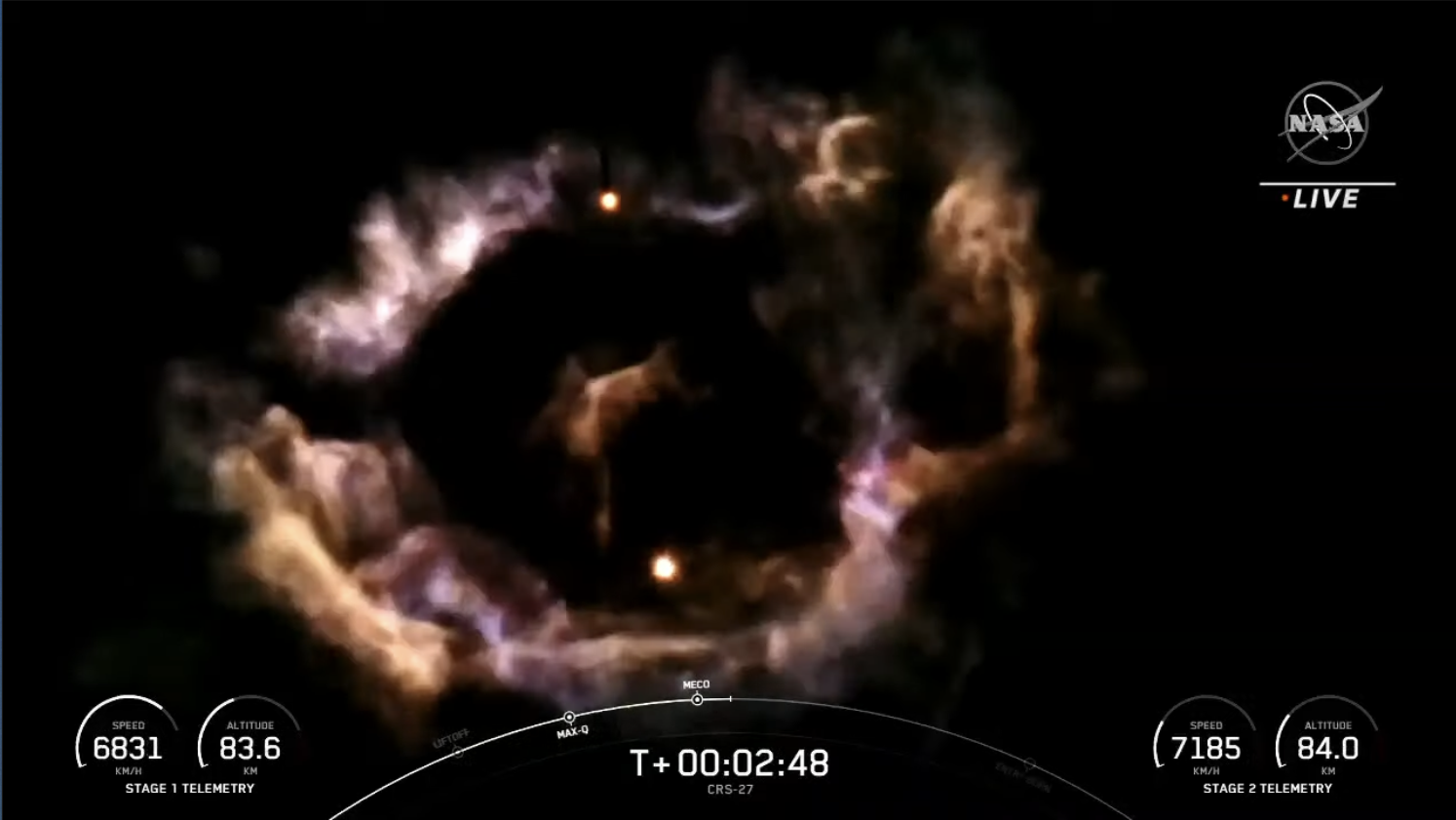
C209 rode uphill atop the seven-times-used B1073 booster core, which tonight became the most flight-seasoned Falcon 9 ever to be entrusted with a payload—human or cargo—for the ISS. Last summer’s CRS-25 Cargo Dragon and last April’s historic, all-civilian Ax-1 mission for Houston, Texas-headquartered AxiomSpace, Inc., aboard Dragon Endeavour, both flew atop five-flight boosters, a previous record.
Introduced into SpaceX’s burgeoning rocket fleet last May, B1073 has lifted 157 Starlink internet communications satellites to orbit, as well as the SES-22 and Amazonas Nexus geostationary communications satellites. And last December she flew her first lunar-bound mission with Japan’s Hakuto-R lander, the United Arab Emirates (UAE) Rashid rover and NASA’s water-ice-seeking Lunar Flashlight.
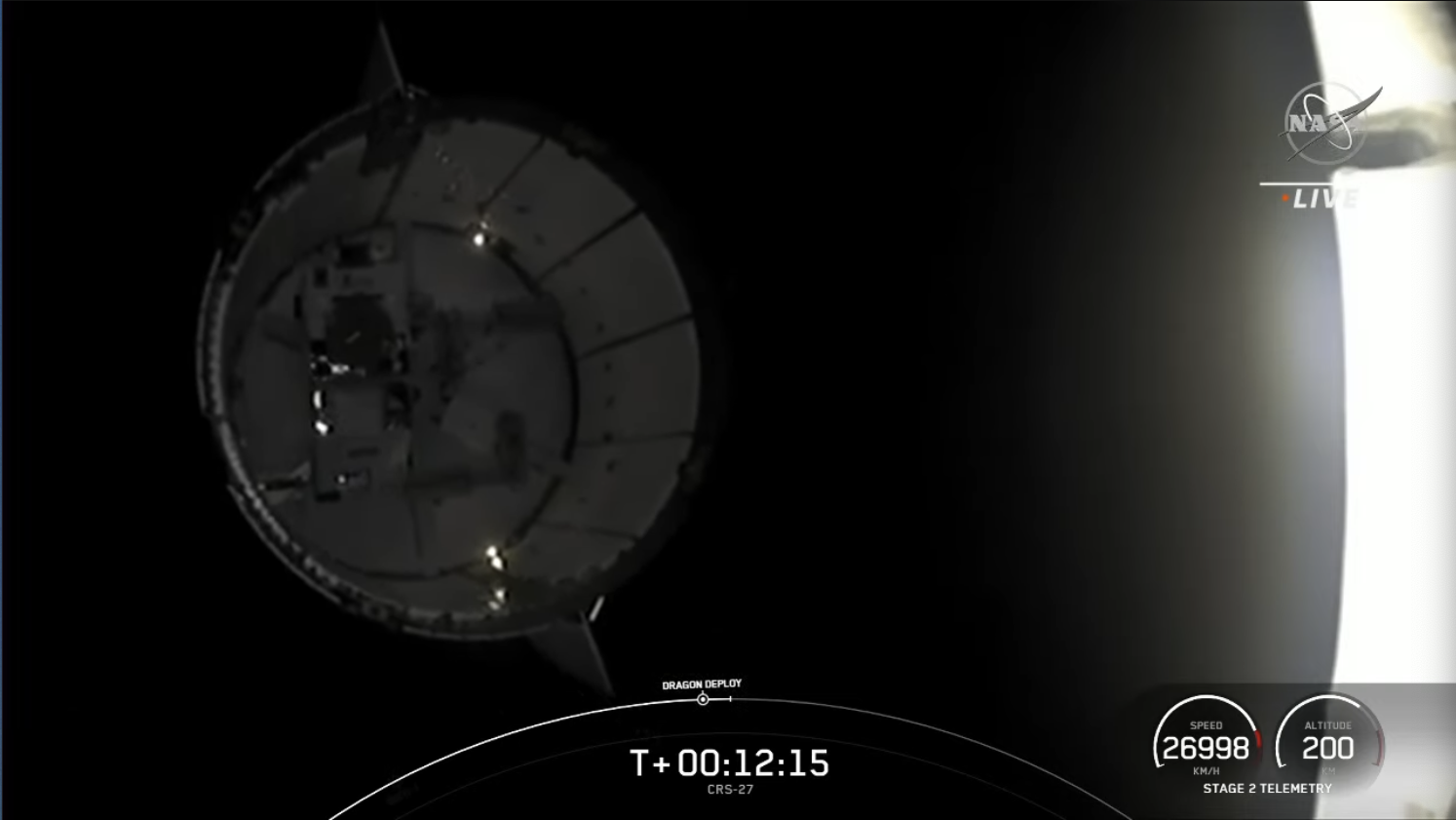
Yesterday, following the conclusion of the LRR, NASA’s Phil Dempsey, transportation integration manager for the ISS Program, explained that there exists a set of “criteria that we use…to evaluate the components of a booster”, as part of the decision process in selecting one for flight. He added that the decision is “based on the assessment of the health of a booster” and not upon its number of past missions.
Following a smooth liftoff at 8:30 p.m. EDT, B1073 speared uphill, her nine Merlin 1D+ engines burning furiously for the first 2.5 minutes of ascent. She then separated from the Falcon 9 and returned to a pinpoint ASDS landing—her sixth overall—a little shy of eight minutes into the mission.
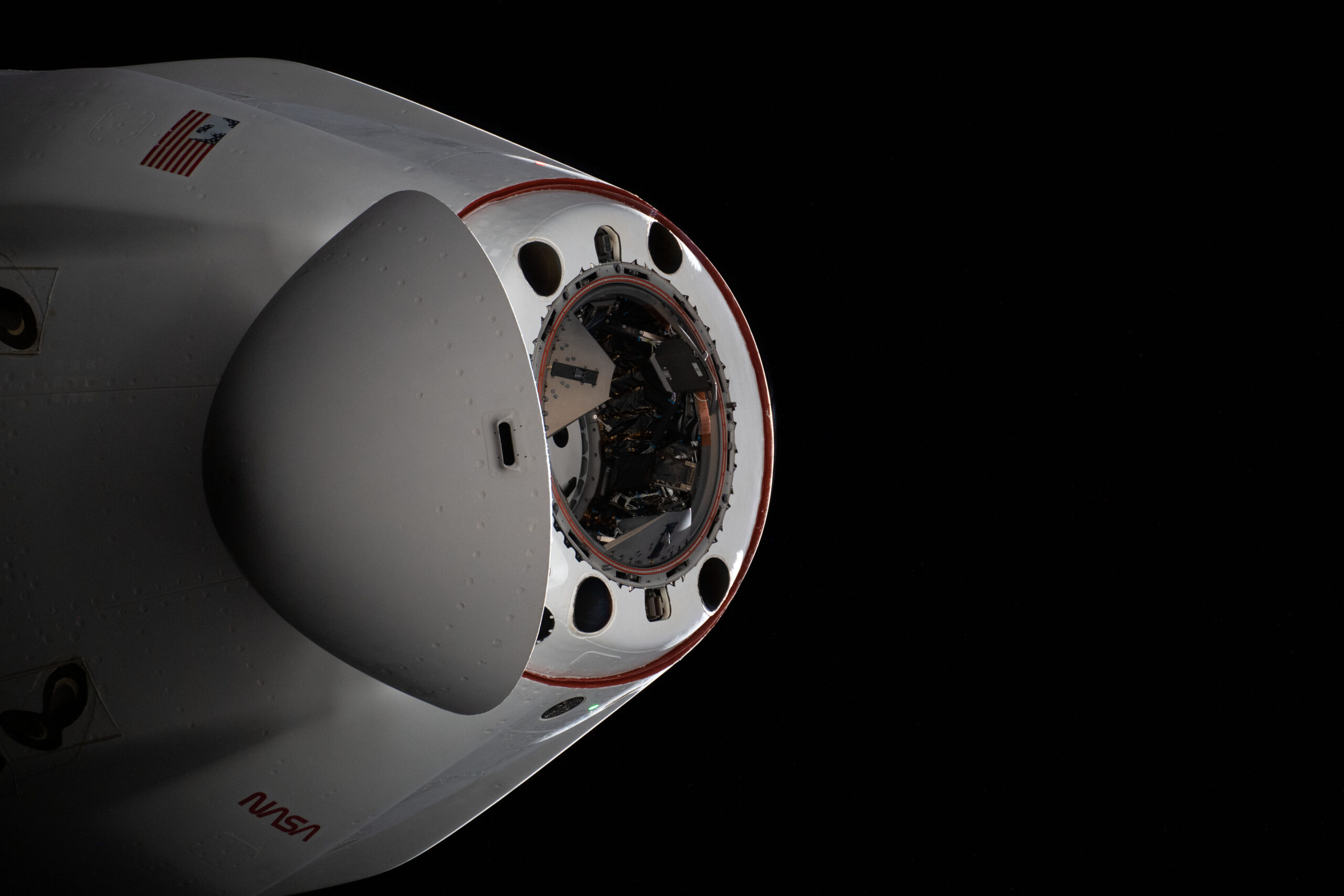
The single Merlin 1D+ Vacuum of the rocket’s second stage then ignited for customary six-minute “burn” to deliver the Cargo Dragon into low-Earth orbit. The cargo ship separated from the Falcon 9 some 11.5 minutes after liftoff and at T+12 minutes and 22 seconds its nose cone autonomously opened to reveal the rendezvous sensors and other instrumentation to guide its 35-hour approach profile to the station.
Docking is anticipated at the forward-facing port of the Harmony node at about 7:52 a.m. EDT Thursday. CRS-27 will remain docked at the ISS for about a month, with departure expected in the mid-April timeframe, wrapping up the United States’ first cargo mission of 2023. Two more Cargo Dragons—CRS-28 and CRS-29—are scheduled for launch in June and December, with Northrop Grumman Corp.’s NG-19 Cygnus set to fly later this spring and Sierra Nevada Corp.’s shuttle-like Dream Chaser spaceplane targeting its maiden voyage in the late summertime.




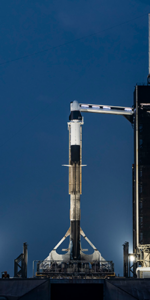
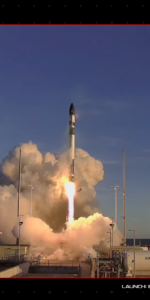
2 Comments
2 Pings & Trackbacks
Pingback:SpaceX Prepares for Record-Breaking Falcon 9 Launch Today - AmericaSpace
Pingback:SpaceX Aims for Monday Launch Double-Header - AmericaSpace